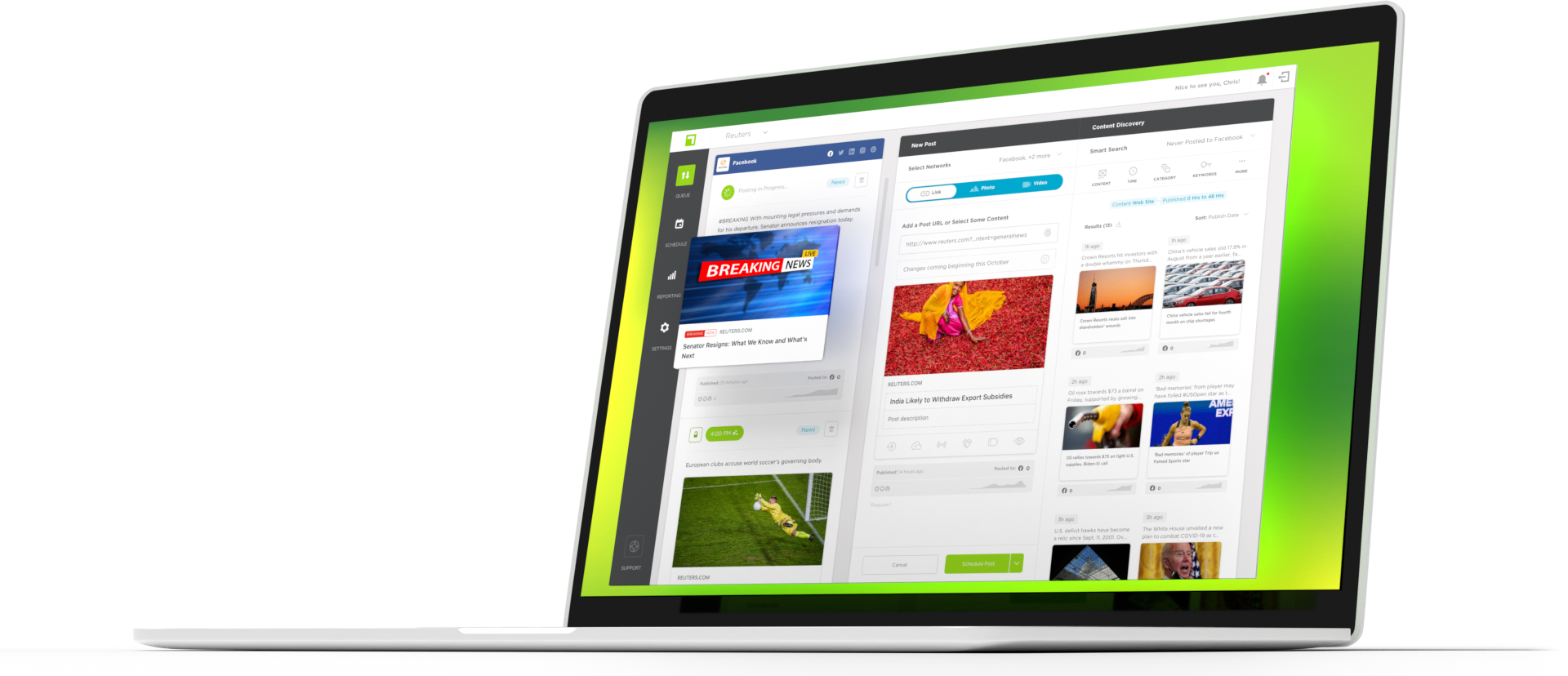If you are a content creator, there are many platforms you need to think about for a single piece of content. Starting with publishing to your website and then sending it out to social media, email, and even internal can be exhausting and overwhelming. Image ratios, hashtags, page tags, character cutoffs, and every other little aspect of posting are different from platform to platform. Read on to learn more, and then contact us for a demo to see how our tool for managing social media platforms can help your company.
Does it make sense to crosspost everything? Probably not, but some minor tweaks may make things work for you.
Your CMS
Your Content Management System (CMS) is going to be the most critical step since it’s where your content lives and originates. Setting things up properly in the back end will make all of the following actions so much easier!
Things to consider when creating your content and setting it up in your CMS:
- Headline. Headlines are critical. Construct it well, consider SEO, and make sure it is as compelling as you can make it. Here are some other tips on making your headline strong.
- Metadata. Fill out all the fields! Your metadata will impact your search presence, how your content pulls through on social, how you organize it in the backend, and just about everything about how your content presents. Questions about metadata setup? Read this through.
- Social fields. You can create custom social headlines, copy, and images in custom meta fields or even in a plugin like Yoast. These particular social fields will allow you to customize your presentation for each social platform and search to get the most out of your piece. Add your Twitter hashtags, Your Facebook-friendly headline, and more.
Get our social media and digital publishing updates straight to your inbox
Things to avoid
There are so many platform-specific pieces of posts that we don’t even think about until they are automatically shared to the wrong place.
Take Instagram handles. @TrueAnthem may look normal and appropriate on Instagram, but the second you publish the same piece of content to Facebook, the post appears cluttery, and the tag doesn’t make any sense.
Here are some other things to avoid:
- Using the wrong hashtags. You’re generally going to want to avoid these on Facebook. Studies have shown that the tags reduce engagement on Facebook. On Twitter, you want to use just a couple. On Instagram, hashtagging is a critical part of reaching large audiences. Make sure you don’t post hashtags to Facebook or post 30 tags to Twitter. Conversely, you don’t want to limit your reach by leaving them out altogether when they could be helpful. It’s probably best to go in and add these manually.
- Using the wrong aspect ratio for your images. For example Facebook feed should be 1200×630
- Using the wrong copy length. Copy length may seem like a silly thing, but it matters. Each platform has a different character limit. On Twitter, the name of the game is brevity. You’re going to want to pack much punch into 280 characters. On Facebook, you have some more space. Captions can be a potent tool on Instagram as well, but you’ll need to make sure you include room for hashtagging as well. Be aware of the platform, and make sure your copy makes sense.
Next up: Automation
If you’re doing all of these steps to prepare your content, you are ready to let AI take the reins and free up the rest of your time. Seriously. All of your preparation ensures that your post will be picture-perfect, and True Anthem can take it from here. We’ll help determine what, when, and how often you should be posting, queue up your content, and give you precious hours back throughout your day.
If you’re ready to lighten your load, set up a demo today.

